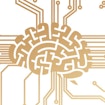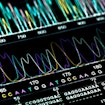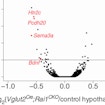
The deletion of 27 genes in the 16p11.2 chromosomal region is associated with autism spectrum disorders, intellectual disability and obesity. To study the underlying cellular, molecular and anatomical basis of autism, Ricardo Dolmetsch and his colleagues at Stanford University in California have generated a mouse that lacks the same 27 genes on a corresponding chromosome in the mouse genome. Their goal, in collaboration with Jacqueline Crawley’s lab, is to characterize the neuroanatomical, neurophysiological and behavioral features of these mice.







